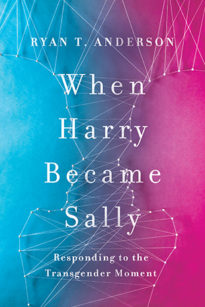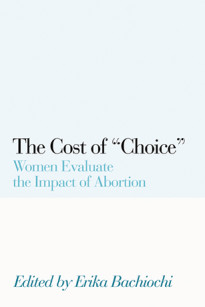In 1989, the classic film When Harry Met Sally dealt with one thorny issue: Can a man and woman really be “just friends”? That question may still be up in the air, but Hollywood took on a more fundamental one with the 2015 film The Danish Girl: Can a man really become a woman? The answer from Hollywood was a resounding “yes.”
The Danish Girl is based on the true story of Einar Wegener, a painter in Copenhagen who in 1930 became the first known subject of “sex reassignment” surgery. He had long thought of himself as having a female identity that he called “Lili Elbe,” but whether those drastic medical procedures made him truly a woman is another matter. The idea that a person could have been born into a body of the wrong sex and might be transformed into the other sex by surgery and hormones would remain marginal for some time. Now it is rapidly becoming a mainstream view that social and medical “transition” is the appropriate treatment for people, including children, who feel at odds with their biological sex.
America is in the midst of what has been called a “transgender moment.” Not long ago, most Americans had never heard of transgender identity, but within the space of a year it became a cause claiming the mantle of civil rights. A discordant gender identity is said to represent who the person really is, by contrast with the sex “assigned at birth,” and therefore any failure to accept and support a transgender identity amounts to bigotry. We are told that not treating people as the gender they claim to be is discriminatory. But is it true that a boy could be “trapped” in a girl’s body? Is our sex merely “assigned” to us? Can modern medicine “reassign” sex? What is the most loving and helpful response to the condition of gender dysphoria, a profound and often debilitating sense of alienation from one’s bodily sex? Should our laws accept and enforce a subjective notion of gender?
These shouldn’t be difficult questions. In the late-1970s, Dr. Paul McHugh thought he had convinced the vast majority of medical professionals not to go along with bold claims about sex and gender that were being advanced by some of his colleagues. McHugh received a world-class education at Harvard College and Harvard Medical School. As chair of psychiatry at Johns Hopkins Medical School and psychiatrist-in-chief at Johns Hopkins Hospital, he put a stop to sex reassignment surgery at that facility in 1979. Many other medical centers across the country followed the elite institution’s lead. But recent years have brought a resurgence of these procedures—not in light of new scientific evidence, mind you, but under the pressure of ideology.
The people increasingly in the spotlight of the transgender moment are children. In 2007, Boston Children’s Hospital “became the first major program in the United States to focus on transgender children and adolescents,” as its website brags. A decade later, more than forty-five pediatric gender clinics had opened their doors to our nation’s children. Parents are told that puberty blockers and cross-sex hormones may be the only way to prevent their children from committing suicide. Never mind that the best studies of gender dysphoria (studies that even transgender activists cite) show that between 80 and 95 percent of children who express a discordant gender identity will come to identify with their bodily sex if natural development is allowed to proceed. And never mind that “transitioning” treatment has not been shown to reduce the extraordinarily high rate of suicide attempts among people who identify as transgender (41 percent, compared with 4.6 percent of the general population). In fact, people who have had transition surgery are nineteen times more likely than average to die by suicide. These statistics should be enough to halt the headlong rush into “transitioning” and prompt us to find more effective ways to prevent these tragic outcomes. Most of all, we shouldn’t be encouraging children to “transition,” or making heroes and role models of those who have done so.
In this book, I argue that Dr. McHugh got it right. The best biology, psychology, and philosophy all support an understanding of sex as a bodily reality, and of gender as a social manifestation of bodily sex. Biology isn’t bigotry. Every human society has been organized around a recognition that men and women are fundamentally different, and modern science shows that the differences begin with our DNA and development in the womb. It is true that men and women differ among themselves, and that some people have difficulty identifying with their bodily sex. But this doesn’t mean that sex is either fluid or subjective, as transgender ideology maintains. This book is an effort to provide a nuanced view of our sexed embodiment, a balanced approach to policy issues involving transgender identity and gender more broadly, and a sober and honest survey of the human costs of getting human nature wrong.













